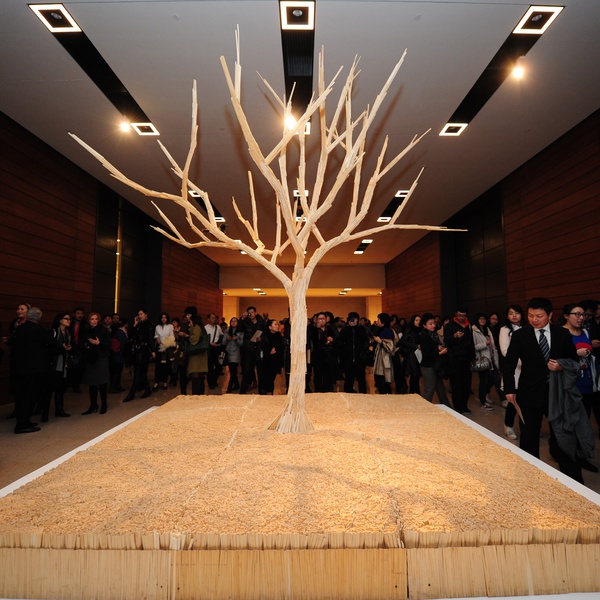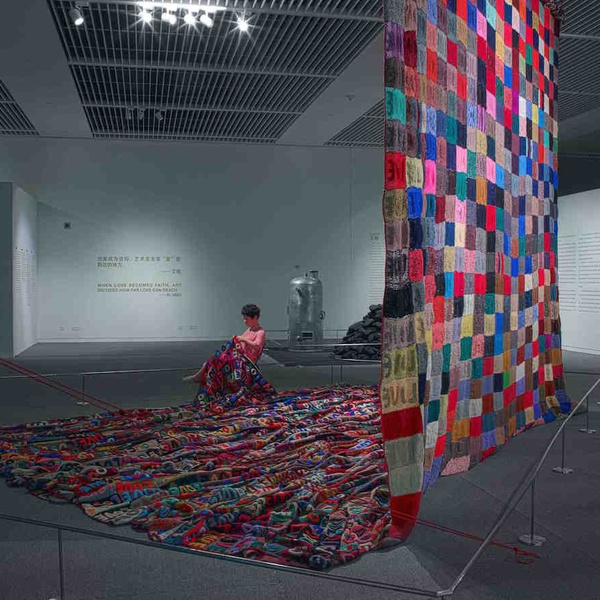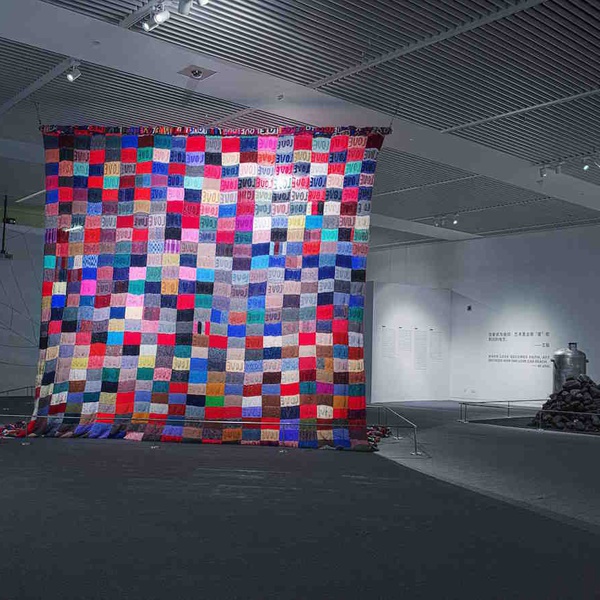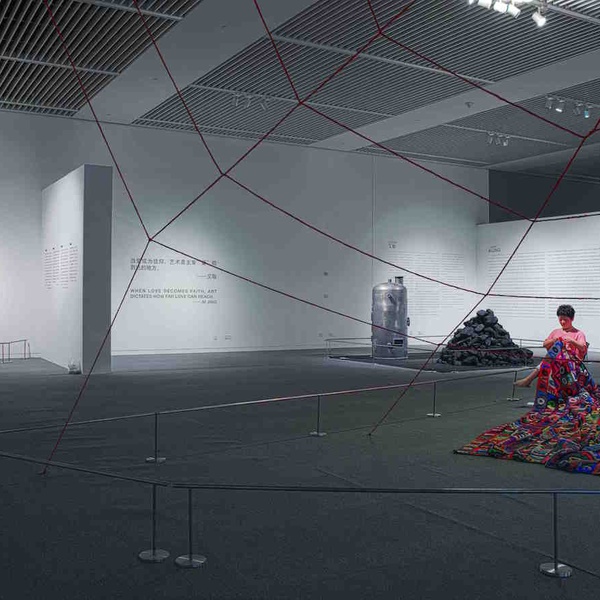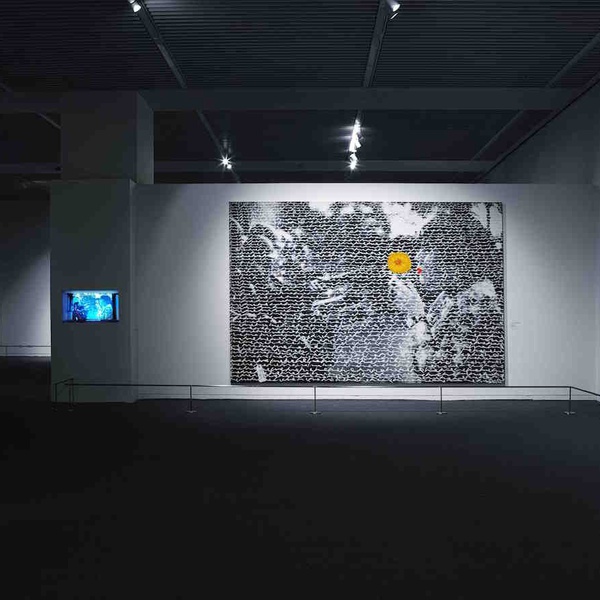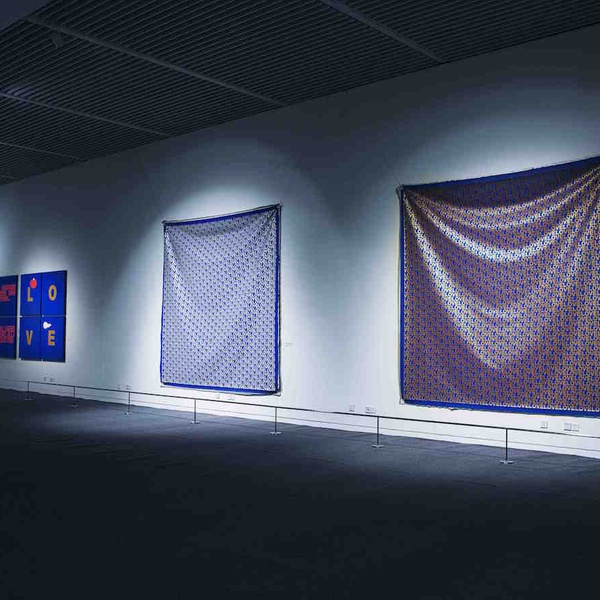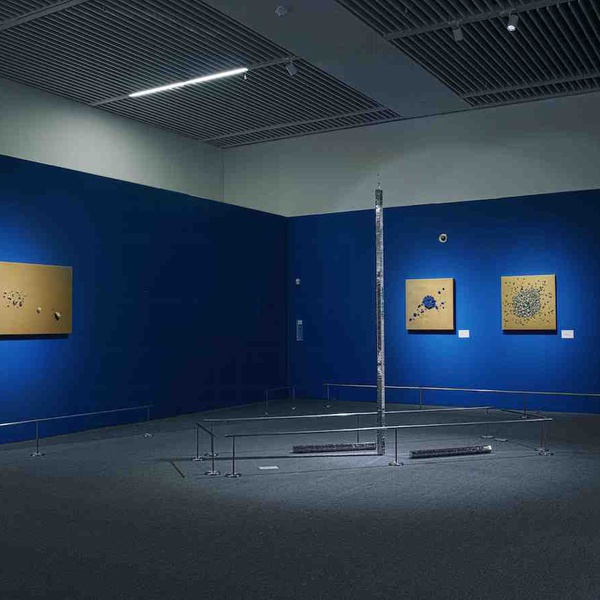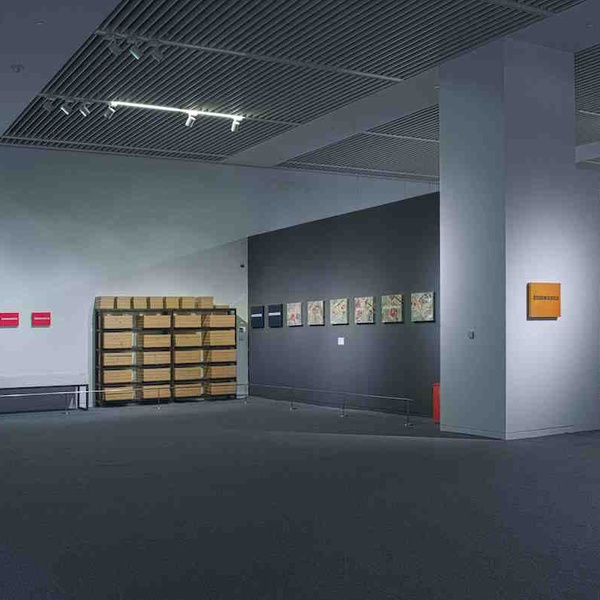I LOVE AIJING: Solo Exhibition curated by Chen Lusheng, National Museum of China, Beijing, China

- X
- Tumblr
The Spiritual Tangle of Love
Chen Lusheng
Upon entering the 21st century, Chinese art adopts the trends of late 20th century and moves fast forward into diversity. However, initial enthusiasm soon dies away and weariness wins over. People start to sit back and want to see what hap- pens next. The market still causes great excitement and attracts a lot of attention. Yet our attitude toward art is quietly going through changes. We try to compare what happens overnight to what remains constant. We put more thoughts into chance and inevitability. The dignity of awe and esteem has been marginalized into a new form of popular culture or ordinary life. But people are not content. Because of their ideal or professional expectation, people still wish to put art on a pedestal in the temple of society to be worshipped and sustained, or to be put in a meaningful collection so as to become cultural tradition. Like with old masters, we wish to gain a glimpse into the complex foundation and winding path of development of their art. Through cultural links, we wish to regard these works as important addition to art. We think, we search and we let art play its appropriate role in reality.
Artists are plenty. However, one needs wisdom to stand out or even to emerge from obscurity. Ai Jing left Shenyang and entered the art circle when she was 17. The contemporary art world has always been turbulent. Whether in Beijing, New York or Tokyo, in her characteristic ways and in different forms she always expresses her thoughts and ideals and let fly her dreams. With My 1997, a song she wrote and sang, she turned the seemingly relaxed story-telling way of singing into a popular culture. It brought out what lied deep inside her and connected with an important event in mainstream ideology. My 1997 took a personal point of view when it expressed its wish for Hong Kong to revert to China. Its charm lies in its ability to address the big issue when talking about the small ones. Ai Jing's art works are all closely related to her experience. She has come a long way and her identity keeps changing. Her art is developing and she always tries hard.
As an artist, Ai Jing is full of dreams. Being a female, she is also refined and graceful. Her art is supported by love. She has chosen to work on a topic of which man never gets tired. She dives into it and expands it, changing her languages to incorporate the characteristics of our times. Her love is delicate but not abstruse. She uses the simplest of methods even when dealing with very grand events and, as a result, the effect is real and clear. Her art is conceptual yet she does not try to confuse us with abstract concepts. She has abandoned complex structural relationships and brought us back to clear thinking. Therefore she stands apart from mainstream contemporary art circle. Her thoughts went from "clothing on the back of a wanderer" fond memory of sweaters her mother made for her, to the countless "threads in loving mother's hand" throughout time. Using love to reflect basic human ethics, she made My Mum and My Hometown, where collective consciousness is awaken and knitting by mother and other relatives is used to reflect the love of fellow human beings. Here it is unnecessary to discuss love because it is easy to understand. Love does not need any concepts since it is straightforward and unassuming. This knitting of love might have been complicated since it required much labor. But it is easy for us to see its true meaning.
Not only is her choice of theme significant, her conceptual expression is also unique. It is about love again and this time environmental and survival issues have caught her attention. She looks painfully to a bleak future. The throwaway chopsticks are made of wood and therefore of trees from the forest. Wasting chopsticks is equivalent to killing trees and forest that could lead to destruction of environment. Ai Jing made a big tree with a height of three and a half meters, using tens of thousands of
Throwaway chopsticks. A black crow perching on the branches is ominous. If the Tree of Life is a knitting of concepts, then the conceptual framework behind Pieces is simpler and more straightforward, just as the board pieces themselves. But here multiple interpretations are allowed and there is more cultural content. It could allude to complex social relations, life and career arrangement, or even war strategies, all of which have starts and ends as in a game of Go. They all need to be planned, dealt with, fought and responded to. The conceptualization of art is as unpredictable as a game of Go, too. Again, Ai Jing successfully tackled a huge and complicated task in her small and simple way.
There are many ways to reach one's artistic goal. For one thing, there are many materials to choose from. Materials have never been emphasized as much as they are today. There has never been this much variety, either. As a result, we see many things that we never expected before. Ai Jing has a special sensitivity toward materials and this is another one of her characteristics. Throwaway chopsticks, yarn of old sweaters, or hand-forged copper, they all correspond to her theme and are the result of her deliberate choice and careful thinking. The importance to art expression of material is well proved here. There are many cheaper materials to use instead of copper. The 60 pieces could also be molded. But Ai Jing is persistent in her pursuit of refinement. She is not concerned with cost but the best way to achieve perfect artistic effect and psychological comfort that are in line with her concept. The choice of old or new material is also deliberate. The "new" of throwaway chopsticks is warning of problems in reality. The "old" of old sweaters and sweatpants is to remind us of love's warmth of past years. She must use this material and she will only use this material. It is how she makes her decision. Such refinement is distinct in art.
Ai Jing's love of art has determined her attitude toward art. She goes through great pains to achieve rapport between concept and material. She spares no effort when creating art works. She uses love to protect art and thus makes her contribution to contemporary Chinese art. Her art has no borders, like her love. We can always expect more from her.
